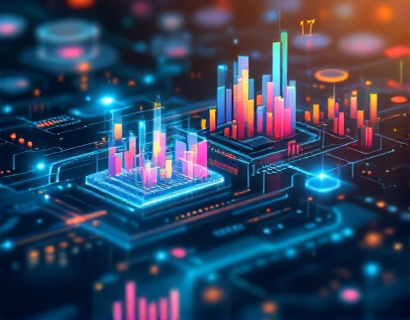Real-Time Government Data: Unlocking Civic Engagement and Transparency
In the digital age, the accessibility of government data has become a cornerstone of transparent and accountable governance. Real-time government data, when made openly accessible, serves as a powerful tool for enhancing civic engagement and ensuring that democratic processes are both informed and participatory. This article explores the transformative impact of real-time data access on governance, highlighting how open data initiatives can revolutionize the way citizens interact with their government and hold it accountable.
The concept of open government data (OGD) is rooted in the principle that information generated by the government should be freely available to the public. This principle is not merely a matter of transparency but a fundamental right in a democratic society. By providing real-time access to government data, authorities can foster an environment where citizens are well-informed and actively engaged in the decision-making processes that affect their lives. The immediacy of real-time data ensures that the information citizens receive is current and relevant, enabling them to make timely and informed decisions.
Enhancing Civic Engagement
Civic engagement is the cornerstone of a healthy democracy, and real-time government data plays a pivotal role in enhancing this engagement. When citizens have access to up-to-date information on government activities, budgets, and policies, they are better equipped to participate in the democratic process. This access empowers individuals to voice their opinions, advocate for change, and hold elected officials accountable. The transparency provided by real-time data breaks down the barriers between the government and the governed, fostering a more collaborative and responsive relationship.
One of the most significant benefits of real-time government data is its ability to demystify complex governmental operations. By making data easily accessible, citizens can understand the intricacies of policy-making, budget allocations, and public service delivery. This understanding is crucial for meaningful participation, as it allows citizens to contribute constructively to public debates and decision-making processes. For instance, real-time data on public spending can help citizens identify areas where funds are being allocated and assess the effectiveness of these expenditures, leading to more informed discussions and proposals for improvement.
Promoting Accountability
Accountability is a fundamental aspect of good governance, and real-time government data is a powerful tool in promoting this virtue. When government actions and decisions are transparent and accessible, it becomes easier for citizens to monitor and evaluate the performance of their leaders. This oversight is essential for preventing corruption and ensuring that public resources are used efficiently and effectively. Real-time data provides a continuous stream of information that can be scrutinized by the public, media, and watchdog organizations, thereby creating a robust system of checks and balances.
Moreover, real-time data can facilitate proactive accountability. Citizens can use this data to anticipate and address issues before they escalate. For example, real-time traffic data can help residents plan their commutes more efficiently, reducing congestion and improving overall urban mobility. Similarly, real-time environmental data can alert communities to potential health risks, enabling them to take preventive measures. This proactive approach not only enhances the quality of life but also demonstrates the government's commitment to the well-being of its citizens.
Real-Time Data and Emergency Response
The importance of real-time data is particularly evident in emergency situations. During natural disasters, public health crises, or other emergencies, timely and accurate information can be a matter of life and death. Real-time government data can provide critical updates on the situation, resource availability, and safety instructions, helping to coordinate relief efforts and protect lives. For instance, real-time data on weather conditions, evacuation routes, and shelter locations can be disseminated quickly to the public, ensuring that people can make informed decisions to stay safe.
Furthermore, real-time data can enhance the efficiency of emergency response teams. By having access to current information on the ground, first responders can prioritize their efforts and allocate resources more effectively. This coordination is crucial in saving time and lives during critical moments. The transparency provided by real-time data also builds trust between the government and the affected communities, as citizens can see that their government is actively working to address the crisis.
Challenges and Solutions
Despite the numerous benefits, the implementation of real-time government data initiatives faces several challenges. One of the primary obstacles is the technical infrastructure required to collect, process, and disseminate data in real time. Many governments, especially in developing regions, may lack the necessary resources and expertise to build and maintain such systems. To overcome this, international cooperation and technical assistance can play a vital role. Developed nations and international organizations can provide support in the form of funding, training, and best practice sharing to help build the required infrastructure.
Another challenge is ensuring the quality and accuracy of the data. Inaccurate or outdated information can lead to misinformed decisions and erode public trust. To address this, governments must establish robust data governance frameworks that include regular data audits, standardization of data formats, and clear protocols for data updates. Transparency in the data collection and processing methods can also help build confidence among the public.
Case Studies: Successful Real-Time Data Initiatives
Several countries and cities have successfully implemented real-time government data initiatives, demonstrating the positive impact on civic engagement and transparency. One notable example is the Open Data Portal of the City of New York. Launched in 2025, this portal provides a comprehensive collection of city data, including crime statistics, budget information, and public health metrics. The portal is user-friendly and accessible, allowing citizens to explore and analyze data to inform their decisions. The portal has been instrumental in fostering a culture of transparency and has led to numerous civic projects and innovations driven by data.
Another successful case is the Real-Time Traffic Information System implemented in Singapore. This system uses a network of sensors and cameras to provide real-time traffic updates to drivers through a mobile app and digital signage. The system not only helps reduce traffic congestion but also improves public transportation efficiency. The transparency of this system has been well-received by the public, who appreciate the timely information that helps them plan their journeys more effectively.
The Future of Real-Time Government Data
As technology continues to advance, the potential for real-time government data to transform governance is immense. The integration of artificial intelligence and machine learning can enhance data analysis, providing deeper insights and predictive capabilities. For example, AI can analyze real-time traffic data to predict congestion patterns and suggest optimal routes, further improving urban mobility. Similarly, machine learning algorithms can identify trends in public health data, enabling proactive measures to prevent outbreaks.
Moreover, the rise of the Internet of Things (IoT) offers new opportunities for real-time data collection. Smart sensors and devices can monitor various aspects of city infrastructure, from air quality to waste management, providing a comprehensive view of urban environments. This data can be used to optimize resource allocation and enhance the overall quality of life for citizens. The key to realizing these benefits lies in creating an open and inclusive ecosystem where data is shared freely and used collaboratively.
Conclusion
Real-time government data is a powerful tool for enhancing civic engagement and transparency. By providing citizens with immediate access to government information, these initiatives empower individuals to participate more actively in the democratic process and hold their leaders accountable. The success of real-time data initiatives depends on robust technical infrastructure, data quality, and a commitment to transparency. As more governments embrace this approach, we can expect to see a more informed, engaged, and collaborative society. Joining the movement towards open and transparent governance is not just a choice but a necessity for building a better future for all.










































